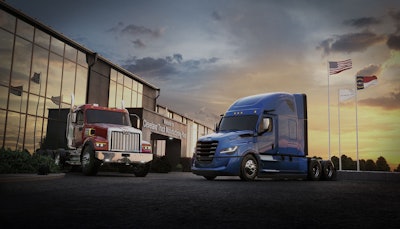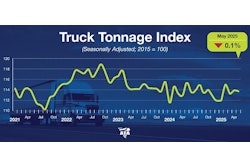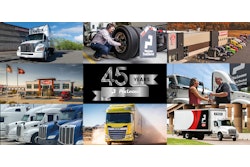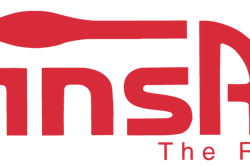
Daimler Truck Holding AG announced its updated global strategy — including a substantial shift regarding zero-emission technologies — and revised growth targets for the years ahead during its Capital Market Day 2025 at its truck manufacturing plant in Cleveland, N.C., on Monday.
Daimler held the comprehensive strategic and financial outlook event under the theme “Stronger 2030” at the Cleveland plant due to its importance to the company’s North American operations. The Freightliner Cascadia and Western Star 47X and 49X models are produced at the plant.
During the event, Daimler presented its evolved group strategy, which the company states is anchored in five strategic pillars to drive higher profitability and increased resilience. Following this strategy, Daimler Truck set ambitious financial targets for 2030 and announced plans to shift its investments around alternative powertrains and solutions to better meet the current and future customer demand.
Daimler states it aims to achieve an adjusted return on sales (adj. ROS) of more than 12% in its Industrial Business (IB). Furthermore, the group will continue its shareholder-oriented capital allocation strategy and has announced a new up to €2 billion share buyback program over two years, expected to start in the second half of 2025.
“At Daimler Truck, we are proud to work for all who keep the world moving. And we want to build the best truck and bus company — for our customers, our employees and our shareholders. We have the strategy in place, and we are establishing the performance culture to achieve this ambition. When we do it right, it brings us to a profitability of more than 12% return on sales by 2030,” says Karin Rådström, president and CEO at Daimler Truck.
The group defined its five strategic pillars as follows:
- Unlock full potential through growth, scale and efficiency: The group focuses on scale where it matters most. This is underscored by the signing of the agreement to integrate Mitsubishi Fuso and Hino.
- Evolve into a customer-centric solutions powerhouse: In 2024, Daimler Truck generated over €8 billion in service revenue in its Industrial Business. The company will further push its service business by improving parts availability and additional investments in the retail and service network, therewith enhancing customer proximity.
- Transform at the speed of right: Daimler Truck is carefully balancing future investments in both diesel and zero-emission technologies. A modular technology strategy has been adopted, supported by partnerships such as Coretura, a joint venture with Volvo Group, focused on software-defined vehicle platforms.
- Build a lean and effective operating model: The group has recently launched the “Cost Down Europe” program, which is expected to deliver more than €1 billion in cost savings by 2030 in Europe. This initiative includes structural cost reductions, headcount optimization, increased labor flexibility and standardized operational practices across German sites.
- Foster a high-performance culture: Daimler Truck is undergoing an internal cultural transformation which is, like the four other pillars, also guided by the principles of “Simpler. Faster. Stronger.” This includes streamlining organizational structures, accelerating decision-making, fostering accountability and implementing a reinforced pay-for-performance model.
Financial strategy updates
In updating its financial targets for 2030, the group stated focusing on new strategic priorities shall enable Daimler Truck to increase its profitability, grow more resilient and increase free cash flow of the Industrial Business by 50% by 2030, allowing it to continue its track record of attractive shareholder returns.
Daimler Truck has set clear financial targets for its Industrial Business through 2030. The company aims to achieve an adj. ROS of more than 12%, with a through-cycle range of 9% to 13% in its core Industrial Business. The company states organic revenue growth is projected at 3% to 5% per annum through 2030, driven by a strong service push, transformation to zero-emission vehicles in Europe, vocational trucks in North America, growth in India, and in the defense sector. Return on capital employed (ROCE) is targeted at 40% to 50% by the end of the decade.
Daimler Truck has announced a new share buyback program with a value of up to €2 billion over two years, expected to start during the second half of 2025. The group remains fully committed to returning excess cash to shareholders through its share buyback program. Furthermore, the group stated it confirms its attractive dividend payout policy in the range of 40% to 60% of net profit.
“By consistently executing our new strategic priorities, we will deliver a step-change in financial performance, driven by our comprehensive Cost Down Europe efficiency program. The combination of resilient growth, disciplined capital allocation, and improved profitability will significantly elevate our strong cash generation. We will continue to reward our shareholders by reaffirming our dividend policy of 40% to 60% payout ratio, and by implementing our new share buyback program of up to two billion euros,” says Eva Scherer, CFO of Daimler Truck.
North American operational update
During Monday’s event, group leadership noted Daimler Truck North America (DTNA) has continued to deliver strong financial results, reinforcing its role as a core profit driver within the Daimler Truck Group.
Since the last Capital Market Day, DTNA has exceeded its 2025 financial targets ahead of schedule, achieving a 12.9% adjusted return on sales in 2024. This performance has been driven by a disciplined focus on value-based pricing, self-help cost reductions, an optimized product mix and close collaboration with dealers and customers to align offerings with total cost of ownership advantages. Having established a strong 24% market share in the heavy vocational market in 2024, the ongoing success of the vocational product strategy will build scale and profitability, the group says.
[RELATED: Order boards open for newest version Cascadia]
Despite ongoing market volatility and supply chain disruptions, DTNA has demonstrated exceptional resilience and operational agility. These results underscore DTNA’s ability to deliver sustainable, profitable growth and long-term value creation for the group.
DTNA is pursuing a highly scalable, customer-centered strategy to drive long-term value — empowering customers operate more effectively, while positioning DTNA for leadership and resilience in the rapidly evolving services space, the company notes. At the same time, DTNA is further growing its vocational and service offerings.
“Daimler Truck North America has delivered consistently strong financial performance over the past years, and we’re building on that momentum,” says John O’Leary, member of the board of management of Daimler Truck and president and CEO at DTNA. “We’ve strengthened our leadership position in North America with the launch of the fifth-generation Freightliner Cascadia, and continued success of the Western Star vocational lineup. The combination of the vocational market’s lower cyclicality and the growth of our service business will further enhance our resilience, long-term growth and overall profitability.”
Changes coming to ZEV investment, software technologies
To navigate uncertainty and balance the company’s technological advancements for both diesel and zero-emission vehicles, Daimler Truck emphasizes the importance of three crucial strategic levers: flexible investments, partnerships and leveraging global scale.
Acknowledging evolving and unpredictable dynamics in external factors such as energy prices, subsidies and regulatory requirements as well as a divergence in the speed of decarbonization across Daimler Truck’s core markets, the group states it is adapting its powertrain strategy. This applies particularly to the North American market, as the speed of zero-emission vehicle (ZEV) adoption has slowed down and led the group to ramp down its zero-emission powertrain platform investments. Daimler Truck will ensure the long-term competitiveness of its heavy-duty engine, by leveraging global platforms and scale.
[RELATED: Trump revokes CARB waivers; California vows to fight back]
On the battery-electric side the company will pragmatically balance make or buy-decisions and move to truly truckified ZEV platforms in line with the market uptake. When it comes to hydrogen powertrain development, the company is focused on Europe. However, progress in building out hydrogen refuelling stations has been much slower than expected. Daimler Truck states it therefore is moving the large-scale fuel cell industrialization and planned series production of hydrogen-powered trucks to the early thirties.
Moreover, Daimler Truck is making significant strides toward the future of trucking with Coretura, the recently announced joint venture with the Volvo Group, with the goal to create an industry standard software-defined vehicle platform. This platform aims to revolutionize truck operations by enabling all-new functionalities, continuous fleet improvements and optimized total cost of ownership through software-only features, the company says.
“Our flexible, modular technology strategy enables Daimler Truck to transform at the speed of right. Depending on the transformation speed in different markets, we deliver the right technologies at the right time, to make the business of our customers more successful and to create global scale for Daimler Truck. This accounts for both diesel and zero-emission propulsion systems as well as for software and electronics in the truck”, says Andreas Gorbach, member of the board of management of Daimler Truck, responsible for Truck Technology. “With flexible investments, strong partnerships and a focus on global scale, we are well-positioned to lead the future of trucking.”










